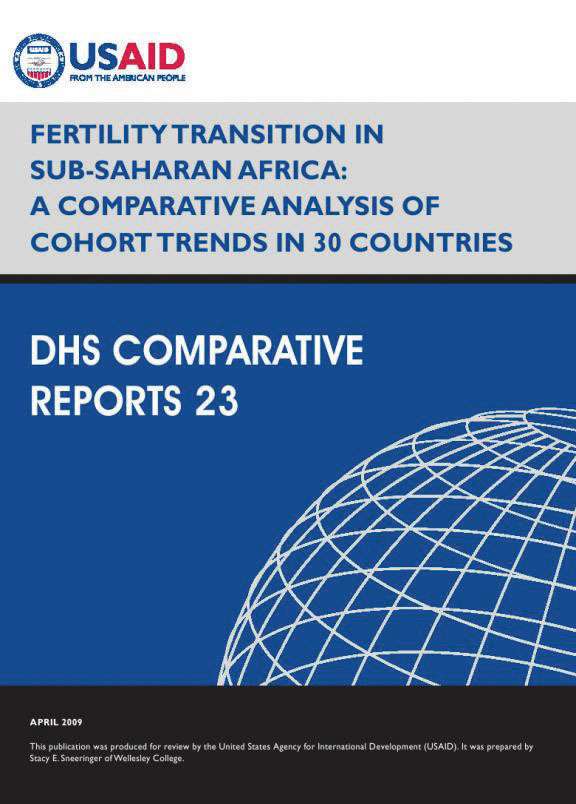- PUBLICATIONS
- JOURNAL ARTICLES
- ACCESS PUBLICATIONS
Publications Summary
- Document Type
- Comparative Reports
- Publication Topic(s)
- Fertility and Fertility Preferences
- Language
- English
- Recommended Citation
- Sneeringer, Stacy E. 2009. Fertility Transition in Sub-Saharan Africa: A Comparative Analysis of Cohort Trends in 30 Countries. DHS Comparative Reports No. 23. Calverton, Maryland, USA: ICF Macro.
- Download Citation
- RIS format / Text format / Endnote format
- Publication Date
- April 2009
- Publication ID
- CR23
Download
 Fertility Transition in Sub-Saharan Africa: A Comparative Analysis of Cohort Trends in 30 Countries (PDF, 610K)
Fertility Transition in Sub-Saharan Africa: A Comparative Analysis of Cohort Trends in 30 Countries (PDF, 610K)
